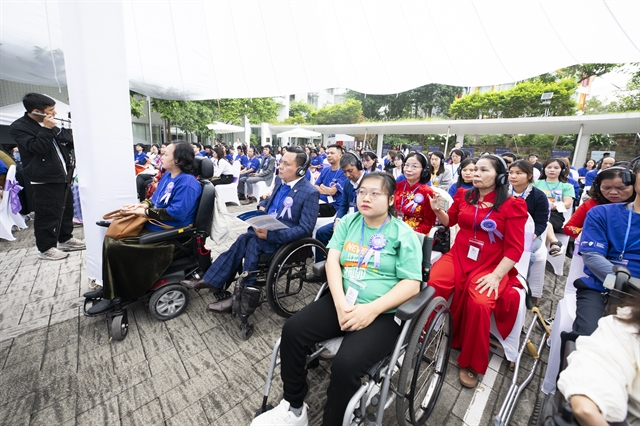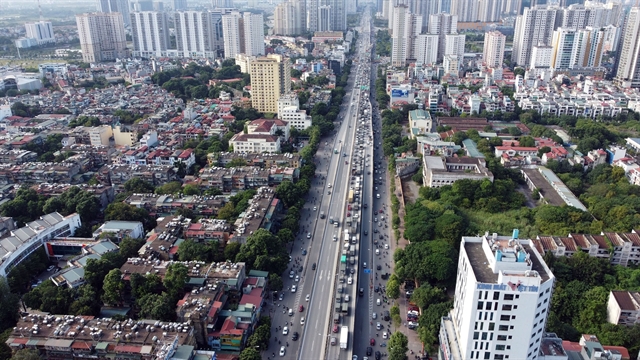 Society
Society


|
| Traffic jams on Hà Nội's Ring Road No.3 have been common for years. The city is proposing to ban motorbikes in inner-city districts to reduce traffic and accidents. — VNA/VNS Photo Huy Hùng |
HÀ NỘI — The municipal authority of Hà Nội is considering a ban on motorbikes in inner-city districts from 2025.
The proposal was made at a meeting of the Hà Nội Council on reviewing a project on road vehicle management, traffic congestion and environmental pollution reduction in the period of 2017 to 2020.
The proposal will see motorbike use stopped in inner city districts within the range of Ring Road 3 and Trường Sa, Hoàng Sa and National Highway 5 roads back to the city centre.
If approved, the ban will come into effect five years earlier than scheduled.
The city continues to push solutions for traffic congestion and pollution control in the central areas with implementation of two key projects on toll collection from motor vehicles in areas with high traffic congestion and environmental pollution.
Zoning will limit motorbike using in accordance with the city’s infrastructure and the service capacity of the public passenger transport system, towards the cessation of motorbikes by 2030.
Accordingly, the city will continue to study and complete procedures to approve the project on zoning to limit motorcycle activity.
The Hà Nội People's Committee has proposed the municipal council approve a plan of spending VNĐ1.8 trillion (more than US$77.6 million) to solve traffic jams by 2025.
The proposal was made in the context of the city People's Committee and relevant departments completing a target programme on reducing congestion and ensuring traffic safety in 2016-2020.
Evaluating the results of the programme, Dương Đức Tuấn, vice chairman of Hà Nội People's Committee, said that the proportion of land area for traffic had increased from 8.65 per cent in 2015 to 10.07 per cent in 2020, and the rate of public passenger transport increased from 11 per cent to 17.03 per cent.
In the past 5 years, the city had handled 67 traffic jams spots. And the traffic accidents in the city had reduced every year, said Tuấn.
However, there were many shortcomings in transport infrastructure, including low investment in transport development, low rates of land for traffic and public passenger transport and modest application of science and technology in traffic management, with many spots of traffic congestion and a high rate of traffic accidents, Tuấn said.
Thus, the city had to continue reducing congestion and ensuring traffic safety in the 2021-2025 period, the vice chairman said.
Accordingly, the priority for the period include handling from seven to ten black spots of traffic jams and limiting new spots, stopping 30-minute long congestion, wiping out black spots of traffic accidents and reducing traffic accidents by 5-10 per cent annually, he said.
Nguyễn Nguyên Quân, head of the urban division of Hà Nội Council, said a budget of VNĐ1.8 trillion will be spent on key works upgrading 180 roads and streets in 12 districts with over VNĐ560 billion; installing 168 traffic signal lights and adjusting traffic in 46 routes and intersections with VNĐ419 billion; repairing roads and main routes with VNĐ404 billion; building steel bridges over Tô Lịch, Kim Ngưu, Lừ, Sét and Nhệu rivers with VNĐ25 billion; and widening roads with VNĐ225 billion.
The city will further implement emission measurements on old motorbikes as a basis for researching and proposing solutions to improving air quality.
The city will submit a plan for approval on road motor vehicle toll collection in areas at risk of traffic jams and environmental pollution, Quân said. — VNS




